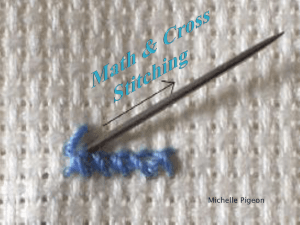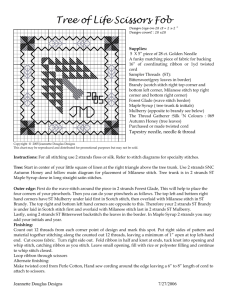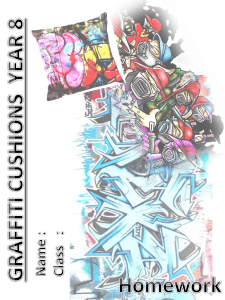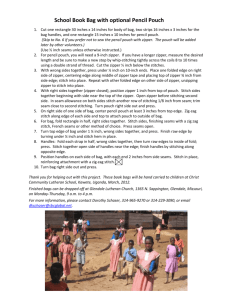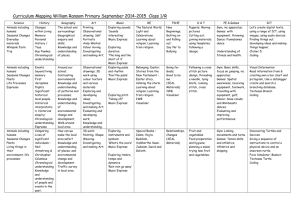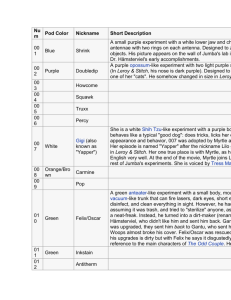Stitching & Thinking: Mending at the Museum
advertisement
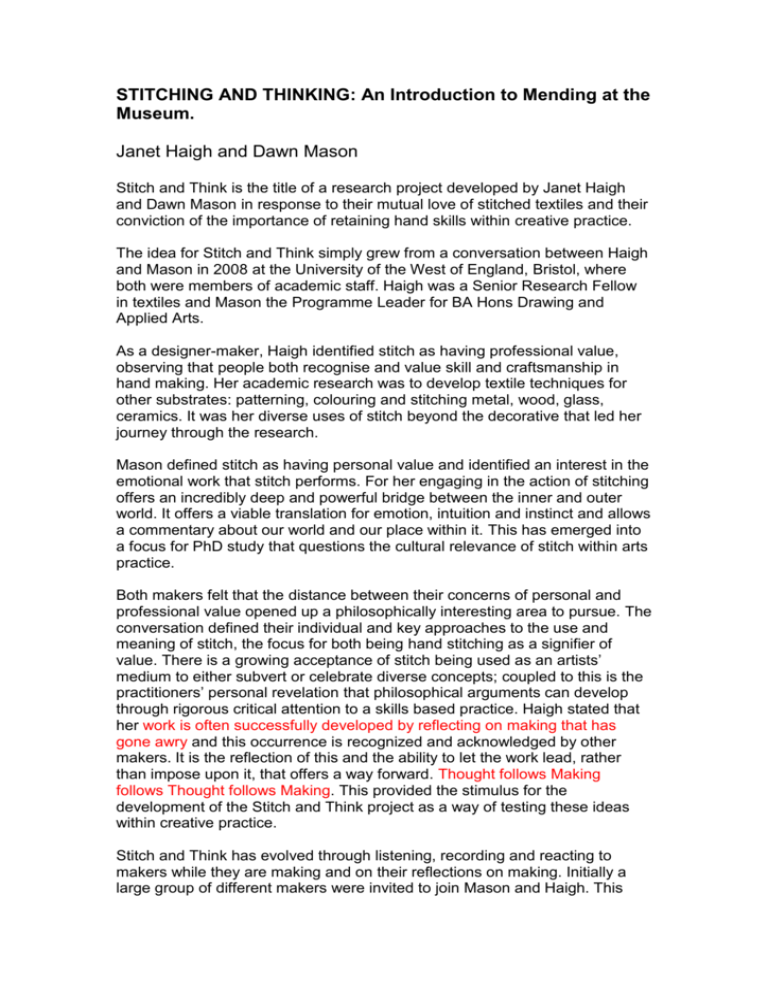
STITCHING AND THINKING: An Introduction to Mending at the Museum. Janet Haigh and Dawn Mason Stitch and Think is the title of a research project developed by Janet Haigh and Dawn Mason in response to their mutual love of stitched textiles and their conviction of the importance of retaining hand skills within creative practice. The idea for Stitch and Think simply grew from a conversation between Haigh and Mason in 2008 at the University of the West of England, Bristol, where both were members of academic staff. Haigh was a Senior Research Fellow in textiles and Mason the Programme Leader for BA Hons Drawing and Applied Arts. As a designer-maker, Haigh identified stitch as having professional value, observing that people both recognise and value skill and craftsmanship in hand making. Her academic research was to develop textile techniques for other substrates: patterning, colouring and stitching metal, wood, glass, ceramics. It was her diverse uses of stitch beyond the decorative that led her journey through the research. Mason defined stitch as having personal value and identified an interest in the emotional work that stitch performs. For her engaging in the action of stitching offers an incredibly deep and powerful bridge between the inner and outer world. It offers a viable translation for emotion, intuition and instinct and allows a commentary about our world and our place within it. This has emerged into a focus for PhD study that questions the cultural relevance of stitch within arts practice. Both makers felt that the distance between their concerns of personal and professional value opened up a philosophically interesting area to pursue. The conversation defined their individual and key approaches to the use and meaning of stitch, the focus for both being hand stitching as a signifier of value. There is a growing acceptance of stitch being used as an artists’ medium to either subvert or celebrate diverse concepts; coupled to this is the practitioners’ personal revelation that philosophical arguments can develop through rigorous critical attention to a skills based practice. Haigh stated that her work is often successfully developed by reflecting on making that has gone awry and this occurrence is recognized and acknowledged by other makers. It is the reflection of this and the ability to let the work lead, rather than impose upon it, that offers a way forward. Thought follows Making follows Thought follows Making. This provided the stimulus for the development of the Stitch and Think project as a way of testing these ideas within creative practice. Stitch and Think has evolved through listening, recording and reacting to makers while they are making and on their reflections on making. Initially a large group of different makers were invited to join Mason and Haigh. This included Dail Behennah, Basil Kardasis, Jess Turrell, Steph Wooster, Hanne Rysgaard, Matthew Partington, Jilly Morris, Eleanor Glover, Matt Benton, Nigel Hurstone and Syann Van Niftrik. Together they aimed to capture and share the realisation and revelation that occurs in engagement with skillsbased practices, and to enable and provoke each member to question and develop their own skill and practice base. Emphasis was placed on sharing skills and ideas. The project aimed to introduce, develop and record the practical and philosophical uses of stitching as a language for makers. The Stitch and Think group was launched at a 3-day workshop in September 2009. Delegates were invited to experiment with a variety of stitches in several materials for a range of media and asked to share their skills and approaches to the particulars of the materials and mediums within their practice. The condition that delegates could take part in the workshop was their agreement to be filmed whilst being interviewed by Cleo Whitt as a way of capturing their personal observations and connections to stitching. What emerged from this evidence was the wide range of uses for stitch as a visual language. Stitch as an anchor; a hinge; a binding; stitch as metaphor “a line of pain”; stitch as memory; family and stitch as inherited knowledge. Despite explanations of stitch eliciting rage, the key sense of emotional connection with stitch was as a meditative or reflective process that moved beyond the action of stitching itself. During the evaluation of the workshop and video interviews, a strong emphasis in darning and mending emerged. The Stitching and Thinking project that has evolved into this exhibition, Mending at the Museum, was born from the group’s interest in the skills and philosophy of mending practices. Mending is once again seen to have value. The current trend for up-cycling and Make do and Mend is a way of keeping traditional skills alive as well as adding worth. The time and skill invested in the action of mending gives new life both to the object itself and the philosophy behind it. As the Stitch and Think group had agreed to let practice lead their activities the interest in mending led to the Darning Samplers held within the collection at the Bristol Museum and Art gallery. Curator of Applied Arts, Karin Walton, hosted a visit where the group was introduced to mended items from the museum’s entire collection and archives. Museums are full of mended stuff. The Stitching and Thinking exhibition showcases work that has been developed in response to this visit and the ongoing discussions, play and experimentation by individuals in the group. The role that stitch has played in this project has been as a catalyst to develop the potential of stitch to inform across different disciplines of making and the opportunities for further investigation into collaborative practice. The power of using mending stitches is eloquently described by philosopher Felix Guattari as he states that: Today our societies have their backs up against the wall; to survive they will have to develop research, innovation and creation still further – the very dimensions which imply an awareness of the strictly aesthetic techniques of rupture and suture.1 In today’s material and digital world it is largely the case that on a day-to-day basis there is a general loss of engagement with materials and processes that would previously have been a significant part of daily existence. This appears to be resulting in an increasing un-connectedness to the physical, tactile and haptic knowledge that manual skills allow. If this is true then we are denying the potential of direct sensory perception to assimilate the information we need to navigate within in an increasingly manufactured environment. This potentially results in a profound alteration in our ability to connect and respond to the world around us. The Stitching and Thinking Exhibition could be seen as an attempt to redress this imbalance. 1 Guattari, Felix. Chaosmosis: An Ethico-Aesthetic Paradigm. Indiana University Press.1995
